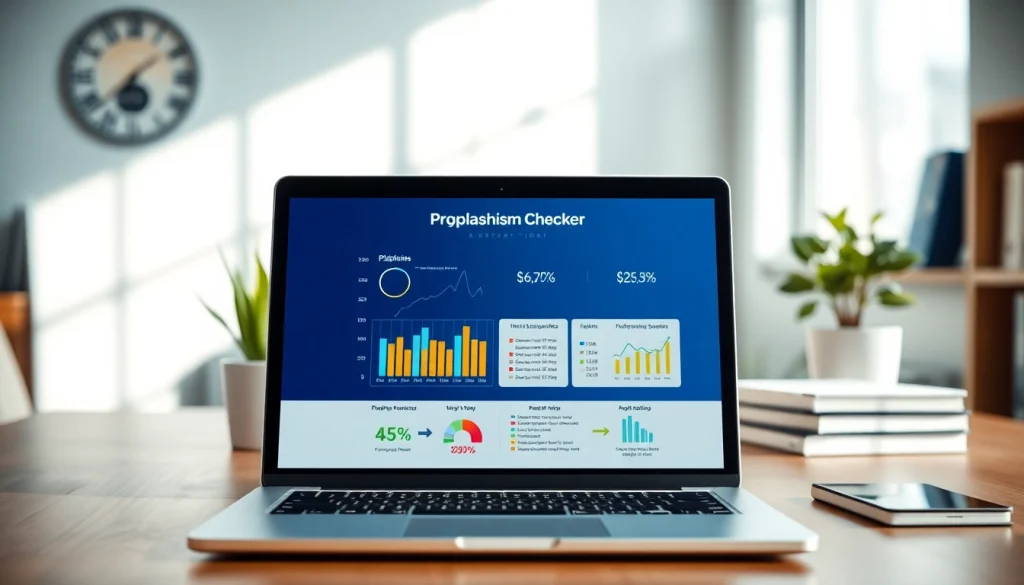Understanding Plagiarism and Its Implications
1. What is Plagiarism?
Plagiarism is the act of using someone else’s work, ideas, or intellectual property without proper acknowledgment, presenting it as your own. This unethical practice can occur in various forms, including copying text verbatim, paraphrasing another’s ideas without citation, or even reusing one’s own previously published work without disclosure, known as self-plagiarism. In academic and professional settings, plagiarism is considered a serious offense that can lead to disciplinary actions.
2. Types of Plagiarism
Understanding the different types of plagiarism is crucial for students, professionals, and content creators to avoid unintentional violations. These include:
- Direct Plagiarism: Copying text word-for-word from a source without citation.
- Self-Plagiarism: Submitting your previous work in a new submission without acknowledgment.
- Paraphrasing Plagiarism: Rewriting someone else’s ideas or phrases without proper attribution.
- Mosaic Plagiarism: Interspersing copied phrases or ideas from numerous sources into your work without proper citations.
- Accidental Plagiarism: Failing to cite sources due to oversight or misunderstanding of citation rules.
3. Consequences of Plagiarism
The ramifications of plagiarism can be severe. Academically, students may face reprimands ranging from failing grades to expulsion. Professionally, organizations may terminate employees or damage their reputations. Legal consequences can also arise, leading to lawsuits or financial penalties. Furthermore, the integrity and credibility of the plagiarizing individual or institution are at stake, which can have long-lasting effects on one’s academic or career trajectory.
Importance of Using a Plagiarism Checker
1. Ensuring Originality in Your Work
Utilizing tools like a plagiarism checker is essential for maintaining the originality of your written work. These tools can quickly analyze your text against extensive databases to identify similarities with other published content, enabling you to verify that your work is genuinely unique and properly cited.
2. Avoiding Academic Misconduct
In educational settings, ensuring that you submit original work is crucial to maintaining academic integrity. A plagiarism checker can help you detect potential issues before submission, allowing you to amend your writing in accordance with academic standards and guidelines, thereby avoiding any accusations of misconduct.
3. Boosting Credibility and Trust
For professionals and content creators, delivering original work not only enhances credibility but also fosters trust with your audience or clients. By consistently using a plagiarism checker, you demonstrate a commitment to originality, which reinforces your reputation as a reliable source of information.
Features to Look for in a Plagiarism Checker
1. Accurate Text Detection
When selecting a plagiarism checker, accuracy is paramount. The tool should be able to detect even the smallest similarities between your work and existing texts. Advanced algorithms that recognize various forms of paraphrasing and contextual phrases are beneficial in ensuring that all aspects of originality are covered.
2. Comprehensive Database
A robust plagiarism checker must have access to an extensive database of previously published papers, articles, and websites. A larger database increases the likelihood of catching potential plagiarism and can provide a more thorough analysis of your text against a wide range of sources.
3. User-Friendly Interface
The effectiveness of a plagiarism checker also depends on its ease of use. A user-friendly interface with clear options for uploading documents, reviewing reports, and understanding results can enhance the user experience, making it accessible for individuals at all proficiency levels.
How to Effectively Use a Plagiarism Checker
1. Preparing Your Document for Analysis
Before using a plagiarism checker, it’s vital to prepare your document appropriately. Ensure that your text is well-formatted and free of errors. This preparation allows the checker to analyze your work efficiently and provides a clearer overview of possible issues.
2. Interpreting the Results
After the analysis, you will receive a plagiarism report. Understanding this report is crucial. Pay attention to the percentage of similarity and the sources flagged by the checker. Review these instances critically to determine whether they require modification or citation integration.
3. Making Necessary Corrections
If your plagiarism checker identifies sections of text that require attention, take the time to make the necessary corrections. This may include revising certain phrases, enhancing original content, or ensuring proper citations are included where needed. The goal is to revise your work to meet academic or professional standards thoroughly.
Best Practices for Avoiding Plagiarism
1. Proper Citation Methods
One of the most effective ways to avoid plagiarism is through proper citation practices. Familiarize yourself with different citation styles such as APA, MLA, or Chicago, and ensure that all sources are correctly cited in your work. This practice clarifies the origin of your ideas and helps you avoid unintentional plagiarism.
2. Incorporating Paraphrasing Techniques
Learning how to paraphrase effectively is crucial for original writing. When paraphrasing, ensure that you fully comprehend the source material before rewriting it in your own words. This method not only reduces the likelihood of plagiarism but also helps you engage more deeply with the content.
3. Regularly Using a Plagiarism Checker
Make it a habit to use a plagiarism checker regularly throughout your writing process. Checking your work at various stages—initial drafts, final submissions, and even after significant revisions—can help you stay on track with originality and maintain the integrity of your academic or professional work.








